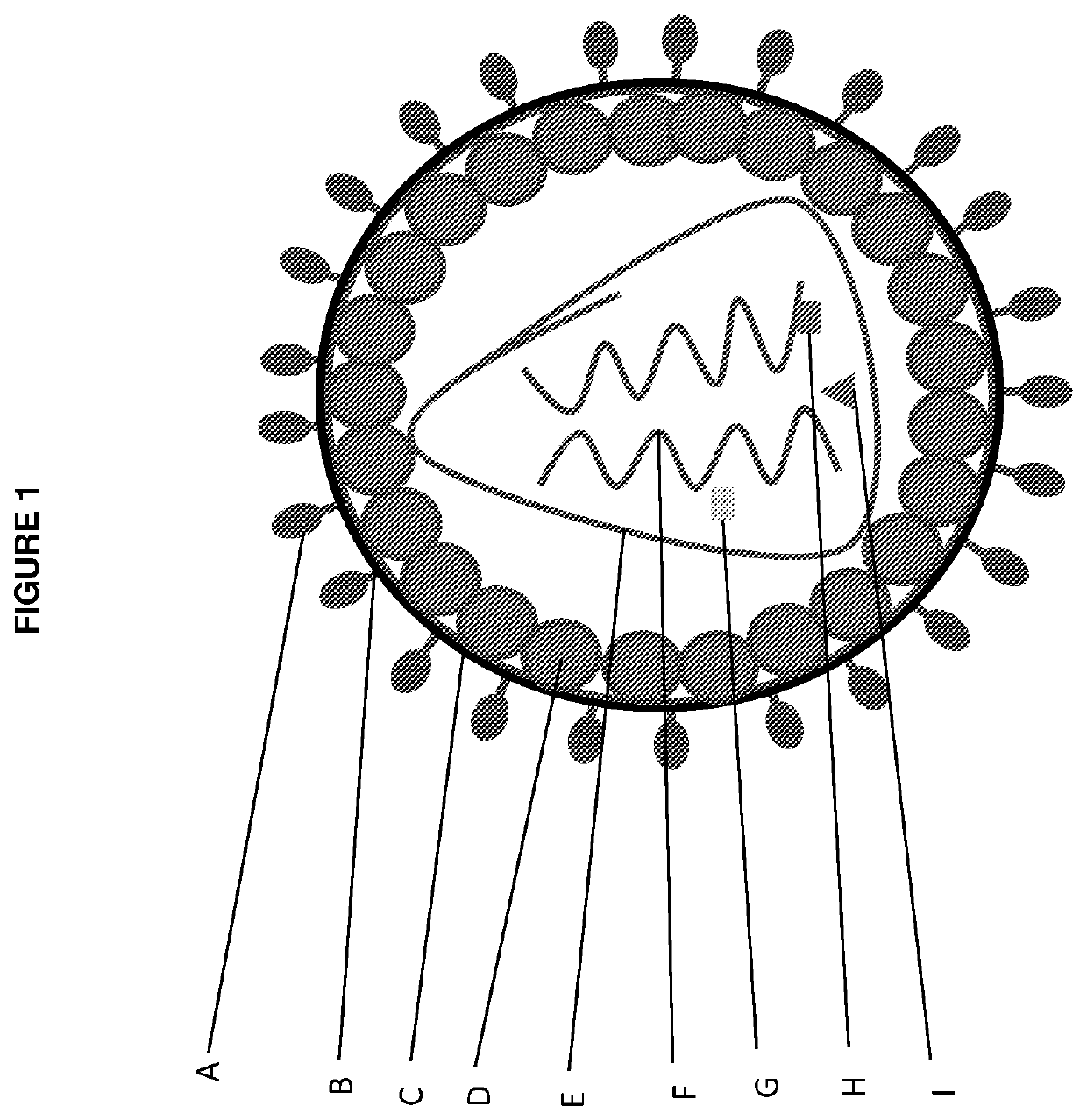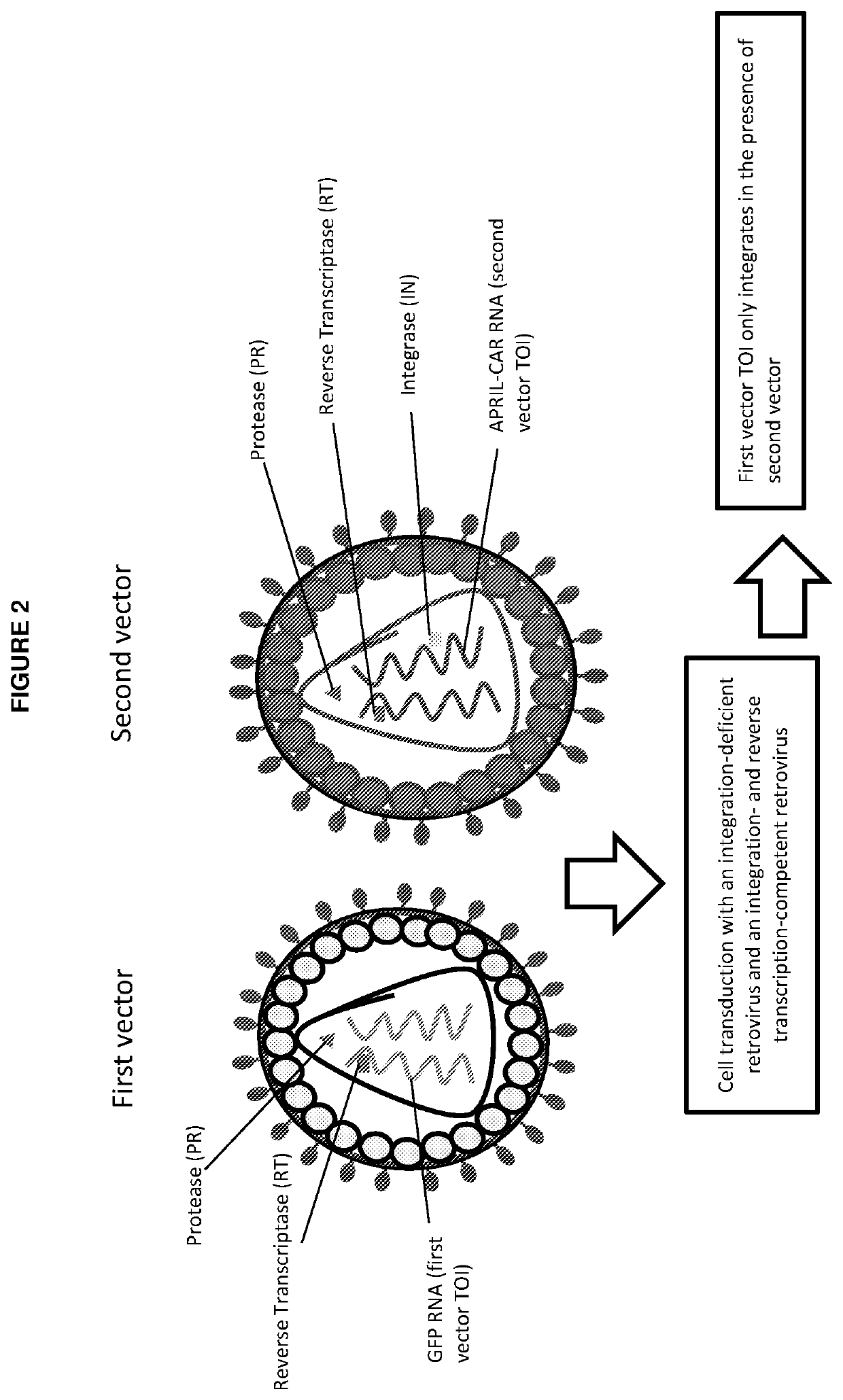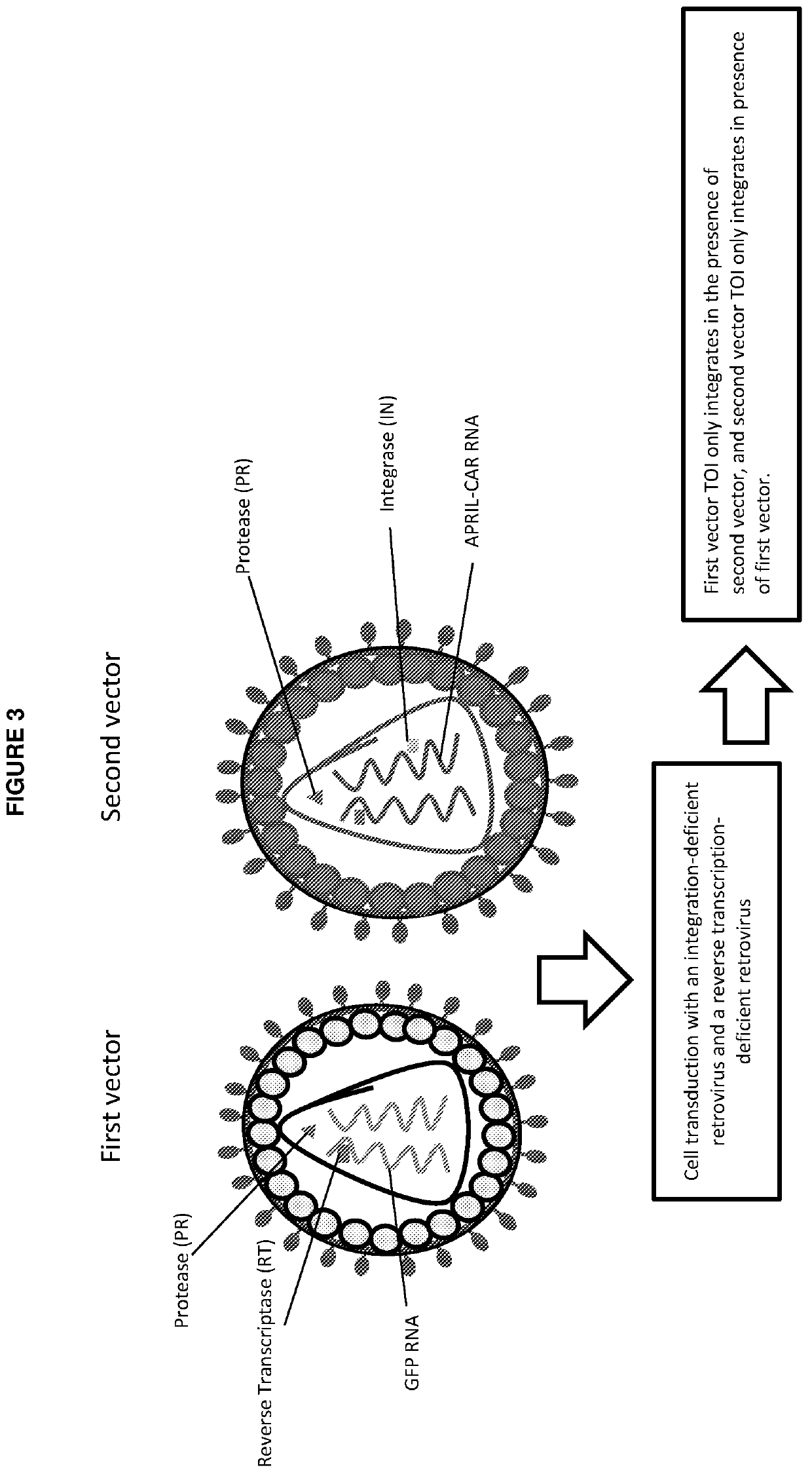Vectors
a vector and vector technology, applied in the field of vectors, can solve the problems of incongruous packaging efficiency, low transduction efficiency, and infinite transfer capacity, and achieve the effect of improving the yield of toi expressing cells
- Summary
- Abstract
- Description
- Claims
- Application Information
AI Technical Summary
Benefits of technology
Problems solved by technology
Method used
Image
Examples
example 1
on of a Mutant Gag pol Construct: IN Removal
[0252]Golden Gate cloning was used to create a mutant Gag pol-encoding sequence unable to produce a functional IN. The two regions flanking the IN-encoding sequence were amplified by PCR using primers containing sequences for a Type IIS restriction endonucleases. The PCR products were then digested with the Type IIS restriction endonucleases to yield compatible sticky ends for subcloning into the original vector. The wild type GagPol plasmid was digested with type II restriction enzymes to yield compatible ends for ligation of the digested PCR products. Following ligation, the new plasmid was transformed into competent bacteria cells and sequenced to verify the correct deletion had occurred i.e., the IN-encoding sequence had been successfully removed.
example 2
on of a Mutant Gag pol Construct: IN Amino Acid Substitution
[0253]To create a mutant Gag pol sequence which encodes a mutant, non-functional IN including specific amino acid substitutions, a gBlock was ordered containing the IN-encoding sequence producing IN with the required mutations, as described in Table 1 and FIG. 3H. PCR was used to amplify the gBlock, which was then digested with Type II restriction endonucleases for cloning into the original GagPol vector, replacing the existing IN sequence.
example 3
on of a Mutant Gag pol Construct: RP Amino Acid Substitution
[0254]To mutate the RNA Binding Phosphotase (RP) protein-encoding sequence, site directed mutagenesis was used; the entire plasmid was amplified using primers which contained sequences producing the mutations referred to in Table 2 and / or FIGS. 4F or 4G. The resulting PCR product was treated with a mix of a kinase, DNA ligase and DpnI to circularise the PCR amplified plasmid and remove the remaining original plasmid used for the PCR reaction, and was then transformed into competent bacteria cells. The resulting modified plasmid was sequenced to verify the introduction of the RP mutations.
PUM
| Property | Measurement | Unit |
|---|---|---|
| Composition | aaaaa | aaaaa |
Abstract
Description
Claims
Application Information
 Login to view more
Login to view more - R&D Engineer
- R&D Manager
- IP Professional
- Industry Leading Data Capabilities
- Powerful AI technology
- Patent DNA Extraction
Browse by: Latest US Patents, China's latest patents, Technical Efficacy Thesaurus, Application Domain, Technology Topic.
© 2024 PatSnap. All rights reserved.Legal|Privacy policy|Modern Slavery Act Transparency Statement|Sitemap



